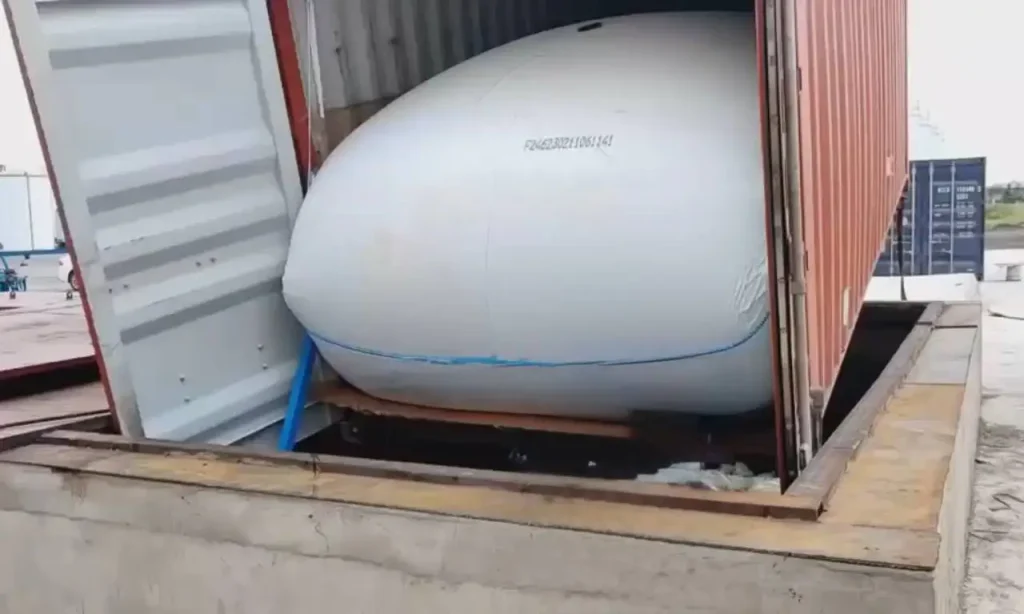
In the global bitumen industry, efficient logistics and reliable packaging are just as important as product quality itself. Among the latest innovations revolutionizing bitumen transportation is the bitumen in flexitank system a modern, cost-effective, and eco-friendly solution designed to simplify bulk shipping while preserving the integrity of the product. As infrastructure projects, road construction, and waterproofing applications continue to grow worldwide, choosing the right supplier of bitumen in flexitank can make a significant difference in operational efficiency and total costs.
What Is Bitumen in Flexitank?
A flexitank is a large, multi-layered flexible container designed to transport bulk liquids inside a standard 20-foot shipping container. Traditionally use for edible oils, chemicals, and lubricants, flexitanks are now widely adopted for transporting bitumen due to advancements in heat-resistant materials and insulation technologies. The bitumen in flexitank solution eliminates the need for traditional steel drums or ISO tanks, offering a more sustainable and cost-efficient alternative.
Each flexitank can hold approximately 20 to 24 metric tons of bitumen, depending on viscosity and temperature requirements. This makes it an excellent choice for suppliers and buyers looking to optimize their shipping capacity while reducing packaging waste and costs.
Advantages of Bitumen in Flexitank
1. Cost Savings
One big advantage of using bitumen in flexitank is saving money. Flexitanks do not need cleaning or return shipping like steel drums or bitutainers, so you spend less on logistics. They also let you use the full space of a container, so you can ship more product in one load and lower the freight cost per ton.
2. Easy Loading and Discharge
Flexitanks are designed for quick and efficient loading and unloading processes. Bitumen is filled into the flexitank in a heated state and can be discharged easily on arrival using a heating system. This not only speeds up operations but also minimizes product loss.
3. Enhanced Product Safety
Modern flexitanks use strong, multi-layer polyethylene with insulation and heat resistance. This design keeps the bitumen stable during transport and helps it reach its destination clean and unchanged. Many flexitanks also include safety valves and pressure relief systems, which lower the risk of leaks or accidents.
4. Environmentally Friendly
Compared to traditional steel drums, flexitanks generate significantly less waste. They are recyclable and disposable, reducing the carbon footprint of the shipping process. By using bitumen in flexitank, companies align themselves with sustainable transportation practices.
Applications of Bitumen Transported in Flexitank
Bitumen transported in flexitank is used across a wide range of industries and applications, including:
Road construction and paving: For asphalt mixes, surface coatings, and binder layers.
Waterproofing: In roofing membranes, sealants, and protective coatings.
Industrial uses: Such as adhesives, insulation materials, and corrosion-resistant coatings.
The flexibility of this transport method allows suppliers to deliver bitumen efficiently to construction sites, storage facilities, and manufacturing plants around the world.
Choosing a Reliable Supplier of Bitumen in Flexitank
When selecting a supplier of bitumen in flexitank, reliability, quality assurance, and global logistics capabilities should be top priorities. A trusted supplier ensures:
Consistent product quality that meets international standards (such as ASTM or EN).
Custom packaging and temperature management tailored to your project requirements.
End-to-end logistics support, including documentation, shipping coordination, and timely delivery.
Technical support for unloading and application processes.
Working with a professional supplier not only guarantees a smooth shipping experience but also helps minimize risks associated with handling and transporting bitumen over long distances.
Conclusion
The move to bitumen in flexitank is changing how companies pack and ship bitumen around the world. It cuts costs, improves safety, and makes transport more sustainable. Flexitank technology now sets a new standard for the bitumen supply chain. If you are a contractor, distributor, or work in infrastructure, choose a reliable supplier that offers bitumen in flexitank. This choice helps you deliver projects on time, stay within budget, and work more efficiently.
It means transporting bulk bitumen in a large, flexible bag placed inside a standard shipping container. This method is simpler, cheaper, and more efficient than using steel drums or other traditional packaging.
Flexitanks help you save money by reducing packaging, cleaning, and return costs. They allow more product per container, improve safety, protect quality during shipping, and support faster loading and unloading.
A single flexitank can usually carry about 20 to 24 metric tons of bitumen, depending on its grade and temperature. This makes it ideal for bulk shipments and long-distance transport.